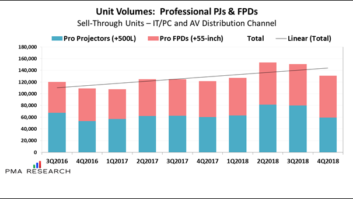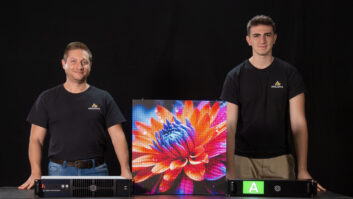 The foundation for sustained growth in 2022 and beyond has been set, despite a turbulent recovery in the professional displays market in 2021. While projection technology has suffered over the past couple of years, with tepid forecast growth prospects, LCD (particularly interactive displays in education settings) and dvLED technology have already experienced a rebound and are set to perform strongly this year.
The foundation for sustained growth in 2022 and beyond has been set, despite a turbulent recovery in the professional displays market in 2021. While projection technology has suffered over the past couple of years, with tepid forecast growth prospects, LCD (particularly interactive displays in education settings) and dvLED technology have already experienced a rebound and are set to perform strongly this year.
The wider bricks and mortar retail market is in turmoil due to Covid-19 forcing restrictions on consumers’ abilities to go out and shop. However, this application remains one of the stronger professional display opportunities in the future, and highlights a key area where dvLED, LCD and projection technology can be utilised together.
Starting in 2022, retailers will focus on creating enticing store experiences, while planning ways to entice consumers back into retail shopping.
The unprecedented conditions across the globe are also promising for investment in kiosk technology, which drives efficiency while supporting social distancing. Market leaders in quick service restaurants have made kiosks commonplace, leading end users to become more accepting and comfortable using them in recent years as the rollout continues to grow.
Approaching maturity
Futuresource has long been referencing a change in the competitive landscape as dvLED product quality matures, and the technology leadership of Chinese brands dilutes. Brand equity becomes a crucial point where the entire wrap of products, solutions, and services offered by brands is increasingly valued by the downstream supply chain.
In terms of dvLED technology developments, Futuresource anticipates the coexistence of microLED with miniLED and SMD LED in pro AV market segments throughout the next five years. Due to the significant barriers to entry, five to seven companies will likely have firm control of a high potential technology that will disrupt both the pro AV and consumer electronics industries if microLED is successful.







